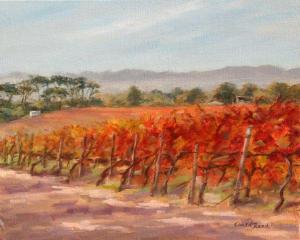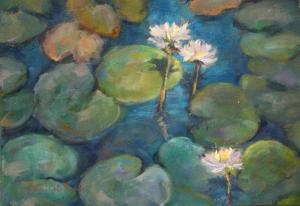The first step in cleaning an oil painting is removing the oil painting from its frame. Make sure the frame is on a soft surface to avoid damage. Once the frame is off use a vacuum to clean the crevasses where the oil painting meets the wooden stretcher. Be careful not to chip the oil painting.
Mildew Elimination off your oil painting
The next step is removing mildew. Using a cotton ball and a Sodium Hydrochloride cleaner, softly rub the affected area on the oil painting. Before going on with the process, check the cotton ball to ensure the oil paint is not coming off. Once the area is cleaned, wipe the cleaned area with a wet sponge right away. Make sure you get all of the cleaning agent off.
Natural cleaning for your oil painting
 To clean off a little dirt and grime, use an onion cut in half. The strength can be increased by adding drops of lemon. The onion lemon mixture should not be allowed to dry on the oil painting. Wipe off with a wet sponge. If the dirt is still holding on, move up to cleaning with a lemon detergent. A soft sponge is suggested to be used with warm water. Use as little water as you can. After cleaning, wipe off all detergent.
To clean off a little dirt and grime, use an onion cut in half. The strength can be increased by adding drops of lemon. The onion lemon mixture should not be allowed to dry on the oil painting. Wipe off with a wet sponge. If the dirt is still holding on, move up to cleaning with a lemon detergent. A soft sponge is suggested to be used with warm water. Use as little water as you can. After cleaning, wipe off all detergent.
Oil Painting’s dirt on a new level
For an advanced level of dirt and grime use Sodium Carbonate. The concentration will need  to be decided on before using the solution on the entire canvas. The way to do this is dissolve a small amount of Sodium Carbonate in warm water, then try the mixture on a corner of the paining with a cotton ball. Maintain this process until the mixture removes grime without taking off the paint. Following the cleaning, rinse the Sodium Carbonate off with fresh water or it will leave white streaks behind.
to be decided on before using the solution on the entire canvas. The way to do this is dissolve a small amount of Sodium Carbonate in warm water, then try the mixture on a corner of the paining with a cotton ball. Maintain this process until the mixture removes grime without taking off the paint. Following the cleaning, rinse the Sodium Carbonate off with fresh water or it will leave white streaks behind.
Last Resort for you Oil Painting
 If the oil painting is terribly dirty and the above technique doesn’t work, the next step is to get rid of the varnish. What is needed to remove the varnish is methylated spirits, turpentine diluted with linseed oil, and quite a few cotton balls. Use the cotton ball covered in methylated spirits to take off the varnish. It is important not to go too deep, remove only the varnish and not the oil paint underneath. The process used to protect the oil paint underneath is after the varnish is removed, use a fresh cotton ball covered in the turpentine-linseed oil mixture to discontinue the methylated spirits. Constantly check the cotton ball to make sure the paint is not coming off. If oil paint starts to come off use the turpentine linseed oil
If the oil painting is terribly dirty and the above technique doesn’t work, the next step is to get rid of the varnish. What is needed to remove the varnish is methylated spirits, turpentine diluted with linseed oil, and quite a few cotton balls. Use the cotton ball covered in methylated spirits to take off the varnish. It is important not to go too deep, remove only the varnish and not the oil paint underneath. The process used to protect the oil paint underneath is after the varnish is removed, use a fresh cotton ball covered in the turpentine-linseed oil mixture to discontinue the methylated spirits. Constantly check the cotton ball to make sure the paint is not coming off. If oil paint starts to come off use the turpentine linseed oil mixture to stop it.
mixture to stop it.
After cleaning the oil painting it is essential to re-varnish the oil painting. The varnish can be gloss or matte and should be applied in a crisscross pattern with a varnish brush. Allow to dry.
To enjoy your oil painting for as long as you can you have to keep your oil painting as clean as possible. This will aid in your oil painting not deteriorating as quickly as other oil paintings may in the future. If you are on the market for buying more oil paintings or would like to enjoy browsing through an array of talented work visit oil paintings for sale.

